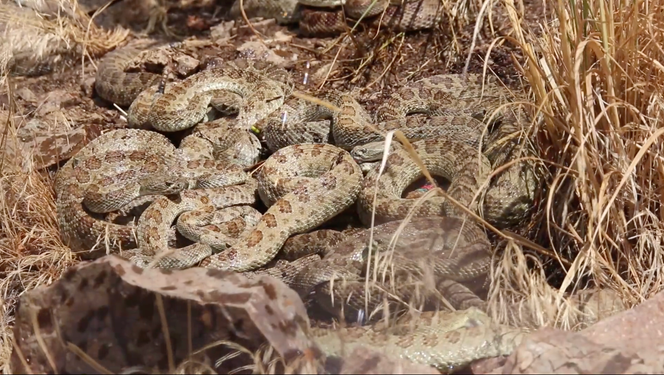


In 30 years of studying snakes, Scott Boback thought he'd learned a lot about them. He'd learned how to dispel the clichés that, from the biblical serpent onward, had cast them as dangerous, devious and cruel creatures. To be amazed by their subtlety and their complex resourcefulness. But when he saw the photos taken on the "Rattlesnake Butte," the biology professor from Dickinson College in Pennsylvania admitted that he found them hard to believe.
He and his colleague Emily Taylor, from California Polytechnic State University, had equipped this particularly arid site in Colorado with self-triggering cameras. And it was here that, as he watched the night shots, he stopped in his tracks. "A little rain had just started to fall, which is unusual because apart from snow in winter, we record less than 5 mm of water per year here. We could see the snakes emerging from their caves, assuming unfamiliar positions and apparently drinking from their own bodies. I showed them to Emily, and she started screaming. We were like a couple of kids. We obviously decided to go further." The results of the ensuing research were published on November 11, 2024, in the journal Current Zoology. They are spectacular, as are the photos and videos made public by the researchers.
You have 64.75% of this article left to read. The rest is for subscribers only.
